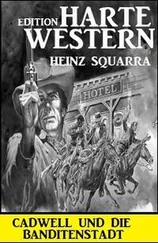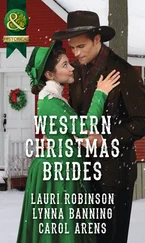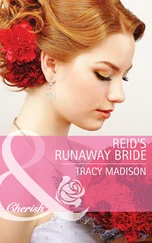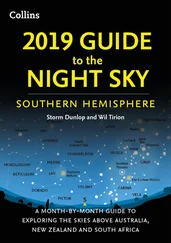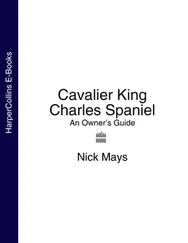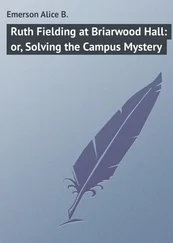Charles Reed - Western Bird Guide
Здесь есть возможность читать онлайн «Charles Reed - Western Bird Guide» — ознакомительный отрывок электронной книги совершенно бесплатно, а после прочтения отрывка купить полную версию. В некоторых случаях можно слушать аудио, скачать через торрент в формате fb2 и присутствует краткое содержание. Жанр: foreign_antique, foreign_prose, на английском языке. Описание произведения, (предисловие) а так же отзывы посетителей доступны на портале библиотеки ЛибКат.
- Название:Western Bird Guide
- Автор:
- Жанр:
- Год:неизвестен
- ISBN:нет данных
- Рейтинг книги:3 / 5. Голосов: 1
-
Избранное:Добавить в избранное
- Отзывы:
-
Ваша оценка:
- 60
- 1
- 2
- 3
- 4
- 5
Western Bird Guide: краткое содержание, описание и аннотация
Предлагаем к чтению аннотацию, описание, краткое содержание или предисловие (зависит от того, что написал сам автор книги «Western Bird Guide»). Если вы не нашли необходимую информацию о книге — напишите в комментариях, мы постараемся отыскать её.
Western Bird Guide — читать онлайн ознакомительный отрывок
Ниже представлен текст книги, разбитый по страницам. Система сохранения места последней прочитанной страницы, позволяет с удобством читать онлайн бесплатно книгу «Western Bird Guide», без необходимости каждый раз заново искать на чём Вы остановились. Поставьте закладку, и сможете в любой момент перейти на страницу, на которой закончили чтение.
Интервал:
Закладка:
Nest.– One or two eggs are laid either in burrows or crevices of the rocks, buffy white in color, with faint markings of light brown.
Range.– Pacific coast from southern California to Alaska, breeding north of the United States.
MARBLED MURRELET
Nesting habits and eggs are similar to the Ancient Murrelet ANCIENT MURRELET 21. Synthliboramphus antiquus. 11 inches The Murrelets have no crests or plumes and the bills are more slender than the Auklets RHINOCEROS AUKLET 15. Cerorhinca monocerata. 11 inches These birds have a much smaller bill than the Puffins TUFTED PUFFIN; SEA PARROT 12. Lunda cirrhata. 13 inches This is the largest of the family, they are odd looking birds, with short legs, stout bodies and very large, thin bills, highly colored with red and yellow, the feet are red and the eyes are white. They stand erect upon their feet and walk with ease. Nest. – They breed commonly on the islands of the Pacific coast, laying their single white egg in burrows or crevices of the rocks. In some sections two or three broods are raised in a season (2.80 × 1.90). Range. – Pacific coast from southern California to Alaska. ; in the summer plumage there is a small horn at the base of the bill from which it is given its name. These birds do not stand upright as do the Puffins; but sit upon their tarsus. Nest. – A single egg is laid in either burrows or in crevices of the rocks, usually without any attempt at nest making (2.70 × 1.80). Range. – Coast and islands of the northern Pacific. Breeds from Oregon to northern Alaska. and are not highly colored. Nest. – One or two eggs are laid either in burrows or crevices of the rocks, buffy white in color, with faint markings of light brown. Range. – Pacific coast from southern California to Alaska, breeding north of the United States.
(2.20 × 1.40) and range is same as above, possibly breeding a little farther south.
XANTHUS MURRELET
This bird is a dull black above, and entirely white below, including the sides of the head below the eye. The under-surface of the wing is also white.
Nest.– The single egg is laid at the end of burrows or under the rocks in dark places similar to the other Murrelets. It is a pale buffy white, and thickly but finely dotted with brown over the entire surface, heaviest on the larger end (2.05 × 1.40).
Range.– Resident along the coast of southern and Lower California, where it breeds on many of the islands.
PIGEON GUILLEMOT
This bird is very similar to the Black Guillemot except that the under-surfaces of the wings are dark. The nearly straight and slender bill is black, feathered to the upper edge of nostrils. Feet and inside of mouth bright red.
Nest.– Their two eggs are laid on the bare rocks in dark places under the rocks, are pale blue or green in color with black or brown markings and paler spots of lilac.
Range.– Pacific coast of North America.
CALIFORNIA MURRE
This is one of the most abundant birds breeding on the Farallones. Large numbers of their eggs are taken yearly to the San Francisco and other market places and disposed of as a food product, and as yet the birds do not seem to diminish to any great extent.
Nest.– But a single white egg is laid on the bare ledges. They vary greatly in color, from nearly white without markings to a deep greenish blue with an endless variety of patterns in light and dark brown (3.40 × 2.00).
Range.– Pacific coast, breeding from the Farallones north to Alaska.
POMARINE JAEGER
These birds are slender and graceful in form and flight, but are the real pirates of bird life, especially among the terns and gulls. This species has two color phases regardless of sex or age. In the light plumage the top of the head is black, rest of the bird brownish. Easily identified by the lengthened central tail-feathers.
Nest.– Two olive brown eggs spotted with black (2.20 × 1.70).
PARASITIC JAEGER
This bird has the two phases of color similar to the last. The two central tail-feathers are longer and more pointed, projecting about four inches beyond the others. All of the Jaegers have grayish blue legs with black feet, and brown eyes.
Nest.– A slight hollow in the marshy ground in which the two brownish eggs are laid (2.15 × 1.65).
Range.– Northern part of North America, south in winter to southern California, breeding in the Arctic regions.
LONG-TAILED JAEGER
This is the most swift and graceful of this family in flight. Similar to the last species, but the central pointed tail-feathers extend eight or ten inches beyond the others. It is more often found in the lighter phase.
Nest.– Their eggs are either laid on the bare ground or in a slight depression, scantily lined with grass (2.10 × 1.50).
Range.– Arctic America; south in winter to South America.
GULLS AND TERNS – Family Laridæ
IVORY GULL
The little Snow Gull, as it is often called, in the breeding season is entirely white; the bill is tipped with yellow and there is a red ring about the eye.
Nest.– Of grasses and seaweed, on the cliffs in the Arctic regions. Three grayish buff eggs are laid marked with brown and black (2.30 × 1.70).
Range.– North of the Arctic Circle, and winters south to British Columbia.
PACIFIC KITTIWAKE
These birds breed in immense rookeries on some of the islands in the Bering Sea.
Nest.– On almost inaccessible cliffs, made of sticks, moss and seaweed, making the interior cup-shaped, to hold the two or three eggs, which are buffy brown or grayish, spotted with darker shades of brown (2.20 × 4.70).
Range.– Coast of the North Pacific, wintering as far south as Lower California.
RED-LEGGED KITTIWAKE
This Kittiwake is very much like the former, excepting that the legs are bright red, the mantle is darker and the bill shorter. They usually nest in separate colonies from the former, and can be readily identified when in flight by the red legs.
Nest.– They have been found abundantly on the islands of the Bering Sea, nesting on the higher ledges and cliffs. The color of the eggs is buffy or brownish, blotched and spotted with lilac and shades of brown.
Range.– Northwestern coast and islands of Bering Sea.
GLAUCOUS GULL
This is one of the largest of the Gulls; mantle light gray; it is distinguished by its size and the primaries, which are white to the tips. It is a powerful bird that preys upon the smaller Gulls, eating both the eggs and young.
Читать дальшеИнтервал:
Закладка:
Похожие книги на «Western Bird Guide»
Представляем Вашему вниманию похожие книги на «Western Bird Guide» списком для выбора. Мы отобрали схожую по названию и смыслу литературу в надежде предоставить читателям больше вариантов отыскать новые, интересные, ещё непрочитанные произведения.
Обсуждение, отзывы о книге «Western Bird Guide» и просто собственные мнения читателей. Оставьте ваши комментарии, напишите, что Вы думаете о произведении, его смысле или главных героях. Укажите что конкретно понравилось, а что нет, и почему Вы так считаете.



